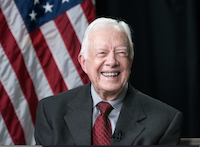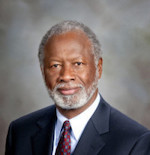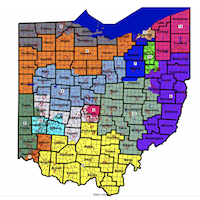
Two Republican lawmakers recently unveiled their election reform bill to colleagues, proposing changes to how Ohioans can register to vote and cast absentee ballots in future elections.
The bill has not yet been introduced, but Reps. Bill Seitz of Green Twp. and Sharon Ray of Wadsworth outlined their proposals in a cosponsor request to fellow members of the Ohio House of Representatives.

Here are some key components to the bill and how the changes would differ from current Ohio election practices:
Automated voter registration at BMV offices
Currently: Ohioans can register to vote at a Bureau of Motor Vehicles office. Registration forms are available there to fill out and turn in (the same is true of a number of other public places, such as libraries).
Proposed Change: Streamlining the process so that information provided to the BMV is used electronically to register someone to vote.
Early voting day removed
Currently: Ohioans can vote early in-person, including from 8 a.m. to 2 p.m. on the Monday before Election Day.
Proposed Change: The Monday before Election Day would be removed from the early voting calendar. The bill sponsors say this is to allow elections officials to be “wholly focused on preparation for Election Day.” The preceding weeks of early voting would be unchanged.
Online absentee ballot requests
Currently: In order to vote by mail (or drop box), Ohioans must request a blank absentee ballot be mailed to them. Requests are made using a paper form that is submitted to a county board of elections office.
Proposed Change: Ohioans would be able to request an absentee ballot online. Doing so would require two forms of identification, similar to existing online voter registration. (A separate proposal calls for adding electronic versions of bank statements/utility bills as permissible forms of ID.)

Drop box restrictions
Currently: Absentee ballot drop boxes came into widespread use in 2020. LaRose has limited county boards of elections to only placing boxes outside their respective offices. The boxes are available for the duration of the early (absentee) voting period.
Proposed Change: County boards of elections offices would be allowed to place up to three drop boxes outside their office. The boxes would only be available for the 10 days prior to Election Day except for cases of a pandemic or other public emergency.
Absentee ballot request deadline rolled back
Currently: Ohioans have until noon on the Saturday before Election Day to request an absentee ballot.
Proposed Change: Making the request deadline be 10 days before Election Day.
The current deadline of three days before is seen as logistically difficult — getting ballots out to voters and then voters submitting their completed ballots, all within a matter of days. LaRose is among those who have advocated for rolling back this deadline in order to ensure ballots can be received, returned and counted.
Of note: This deadline proposal of 10 days prior to Election Day is a more significant rollback than House Republicans sought in 2020. House Bill 680 from last term wanted the deadline rolled back to 7 days before Election Day.

Prepaid Postage
Currently: The Ohio Secretary of State Office has traditionally sent out blank absentee ballot request forms to all voters with return postage paid for to encourage voting.
Last year, the Ohio legislature declined to pay for this postage during the General Election. LaRose ended up using funds from his office to pay for it.
Proposed Change: Restricting the secretary of state from prepaying postage only if the legislature authorizes it first.
Voter registration purging
Currently: Registered voters can be removed from the voter rolls due to inactivity (not voting in multiple elections in a row). This is ostensibly done to keep the voter rolls updated and rid of those who die or move away.
Proposed Change: The bill would codify other actions a voter can take (besides voting) to restart the clock and prevent their voter registration from being purged. This includes signing a petition for a candidate/issue as well as any activity conducted at the BMV.
Young poll worker eligibility
Currently: 17-year-olds can serve as voting precinct officers only if they are in their senior year at high school.
Proposed Change: All 17- year-olds would be eligible to serve, regardless of grade level.




















